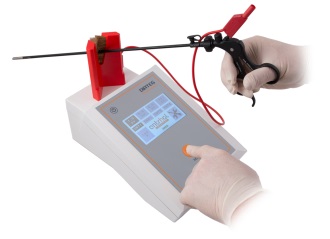Diateg Insulation Tester
The Status Quo
All over the world, faulty insulation on diathermy instruments regularly causes accidents which can lead to tissue damage and which can cause temporary or permanent injury to the patient. The majority of these injuries, which include burns and theatre fires and go, unreported. In the worst-case scenario, fatalities may occur. Studies1,2 in hospitals have shown that 18% of the endoscopic instruments used in the hospitals which participated in the trial had damaged insulation.
Change in Practice – Safety First!
In addition to standard safety procedures, a diathermy tester can eliminate any possible doubt regarding the integrity of the insulation layer on electrosurgical instruments. This device detects damage, porosity, hairline cracks, pinholes and gas pockets, which all affect the efficacy of the insulation and can, lead to internal burns.
